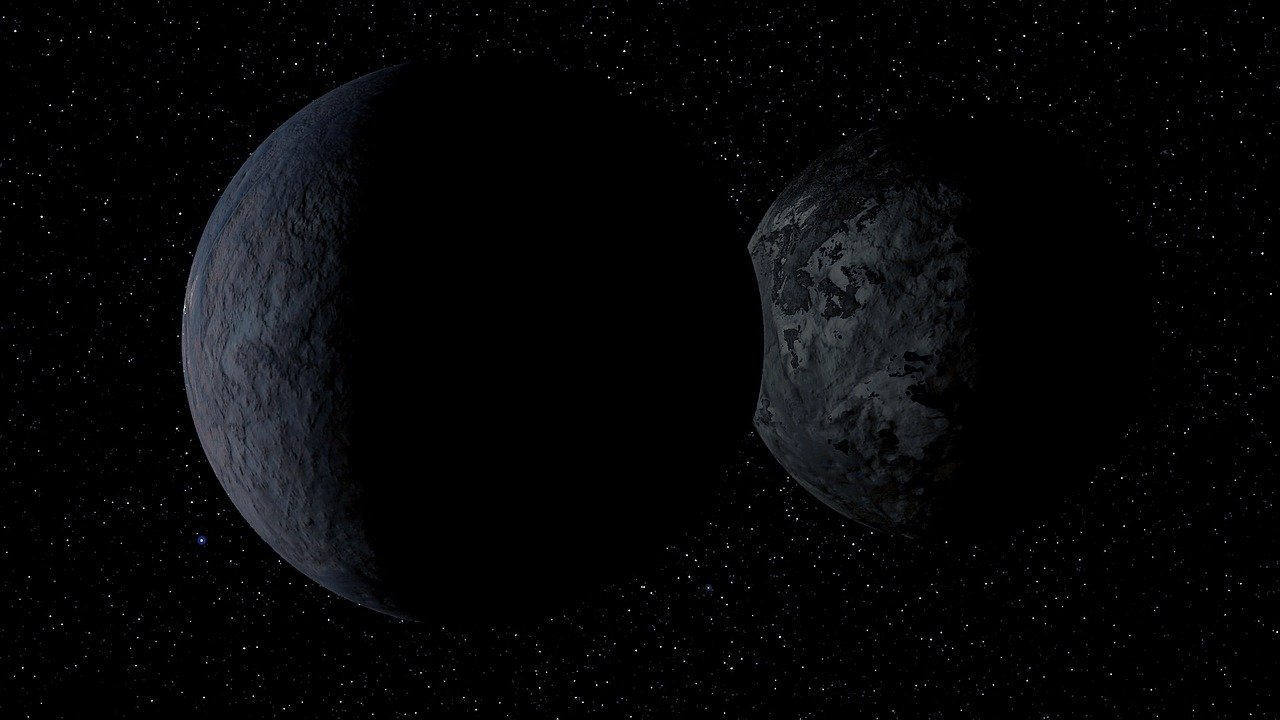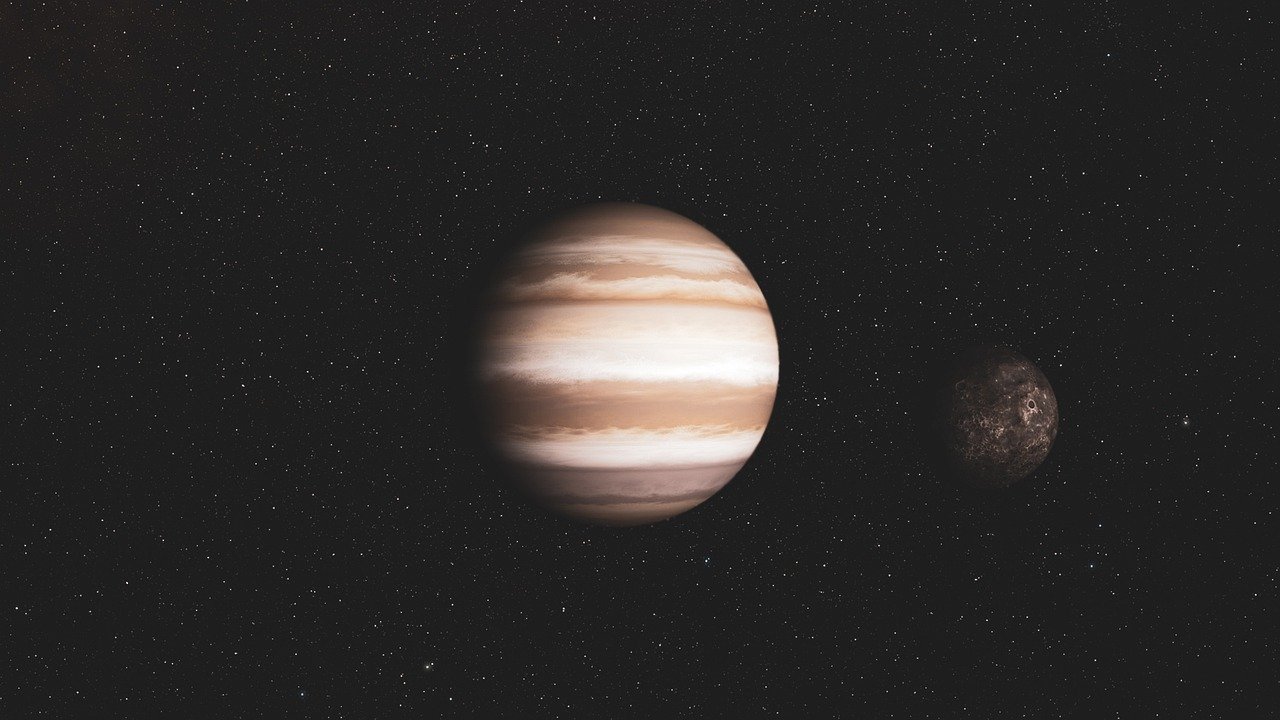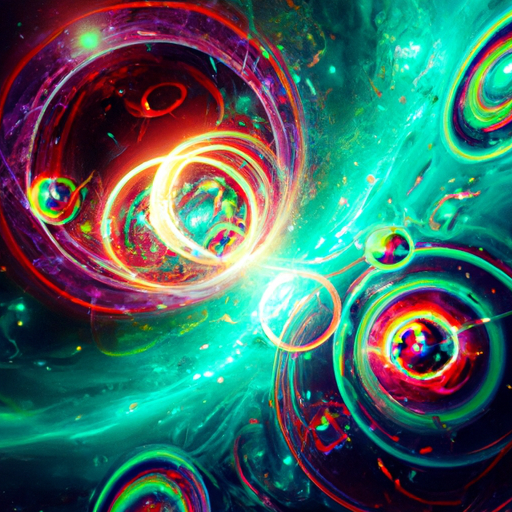Are you curious about the possibility of parallel universes and how they fit into the field of cosmology? In this article, we will explore the fascinating concept of multiverse theories and their connection to parallel universes. We’ll delve into the theories proposed by physicists and cosmologists, discussing the implications they have for our understanding of the universe as a whole. Get ready to embark on a mind-expanding journey into the realm of parallel universes in cosmology!

The Concept of Multiverse
Basic Definition
The concept of the multiverse is derived from the combination of the words “multiple” and “universe.” Put simply, the multiverse theory suggests that our universe is not the only one that exists, but rather there are countless other universes coexisting alongside ours. Each of these universes may have different physical properties, laws of physics, and even alternate versions of ourselves.
Types of Multiverse Theories
There are several different theories that propose the existence of a multiverse, each offering a unique perspective on parallel universes. Among the most widely recognized types are:
Many-Worlds Interpretation: Proposed by physicist Hugh Everett, this theory suggests that every possible outcome of a quantum event actually occurs, giving rise to parallel universes where each possibility is realized.
Inflation Theory: Inflationary cosmology suggests that the rapid expansion of the universe during its early stages led to the creation of multiple universes, each with its own set of physical laws.
String Theory: This theory, which seeks to unify the fundamental forces of nature, suggests the existence of a multitude of universes within a complex mathematical framework known as the landscape multiverse.
Brane Cosmology: This theory posits the existence of membrane-like structures called “branes,” where each brane represents a separate universe.
Holographic Principle: According to this principle, all the information contained within our three-dimensional universe can be represented as a two-dimensional hologram, implying the existence of multiple parallel universes.
Anthropic Principle: This principle recognizes the fine-tuned nature of our universe and suggests that the existence of a multiverse is necessary to explain why our universe’s physical constants are suitable for life.
Quantum Entanglement: The phenomenon of quantum entanglement raises the possibility that interactions between particles could create parallel universes.
Evidence and Support for Multiverse Theories
Observational Evidence
While direct observational evidence for the existence of parallel universes remains elusive, there are several phenomena that provide indirect support for multiverse theories. One such phenomenon is cosmic inflation, which offers an explanation for the uniformity of the universe’s structure on large scales. Inflationary cosmology predicts that the rapid expansion of the early universe would have caused the creation of multiple universes with slight variations in their physical parameters.
Another piece of observational evidence comes from the study of dark energy, a mysterious force that is driving the accelerating expansion of the universe. The existence of dark energy could potentially be explained by the presence of other universes interacting with our own.
Theoretical Support
Theoretical support for multiverse theories comes from various branches of physics, such as quantum mechanics, string theory, and cosmology. For example, in the many-worlds interpretation of quantum mechanics, the existence of parallel universes is a direct consequence of the probabilistic nature of quantum events.
In string theory, the landscape multiverse hypothesis emerges as a result of the immense number of possible configurations of extra dimensions and the properties of fundamental particles. The vast number of potential universes in the landscape provides a framework for the existence of parallel realities.
Inflationary cosmology also provides theoretical support for the multiverse concept. The notion of eternal inflation suggests that our universe is just one of the many “bubbles” that form within an ever-expanding cosmic foam, giving rise to a multitude of separate universes.
Parallel Universes in the Many-Worlds Interpretation
Introduction to Many-Worlds Interpretation
The many-worlds interpretation, proposed by Hugh Everett in the 1950s, challenges the traditional view of quantum mechanics. It suggests that every time a quantum event occurs, all possible outcomes actually happen, but each outcome spawns a separate universe. In this view, the universe we experience is just one branch among countless others, each representing a different quantum possibility.
Quantum Mechanics and Many-Worlds
Quantum mechanics, the branch of physics that describes the behavior of particles at the subatomic level, provides the foundation for the many-worlds interpretation. According to quantum mechanics, particles can exist in a superposition of states, meaning they can simultaneously be in multiple states until observed. The act of observation then “collapses” the superposition into a single state.
In the many-worlds interpretation, the collapse of the wavefunction does not occur. Instead, all possible outcomes coexist in parallel universes, with each observer experiencing a different outcome.
Criticism and Challenges
The many-worlds interpretation has faced criticism and challenges from various perspectives. One criticism revolves around the lack of empirical evidence for the existence of parallel universes. As the interpretation cannot be directly tested, it remains a speculative idea.
Another challenge is the issue of “branch pruning.” If every possible outcome creates a new universe, the number of parallel universes would grow exponentially. Some argue that this violates the principle of Occam’s razor, which favors simpler explanations over complex ones.
Furthermore, the many-worlds interpretation raises philosophical questions regarding the nature of consciousness and the coexistence of multiple versions of ourselves.
Inflation Theory and Multiverse
Inflationary Cosmology
Inflationary cosmology is a theory that explains the rapid expansion of the universe during its early stages. According to this theory, a hypothetical field called the inflaton drove an exponential expansion, smoothing out irregularities and leading to the large-scale uniformity we observe today.
Eternal Inflation: Generating Multiple Universes
One consequence of inflationary cosmology is the generation of multiple universes within an inflating space. The process known as “eternal inflation” suggests that our universe is just one “bubble” among many within a vast cosmic landscape.
During eternal inflation, new bubbles are constantly forming, each representing a separate universe with its own physical laws. These other universes may have different values for fundamental constants or even different numbers of dimensions.
Bubbles and Pocket Universes
The concept of bubble universes within eternal inflation can be likened to soap bubbles within a foam. Each bubble represents a self-contained universe, expanding and developing independently. These bubbles may have distinct properties, such as variations in the strength of fundamental forces or the presence of different types of matter.
These pocket universes, if they exist, would be inaccessible to us due to the vast distances between them and the impossibility of communication or travel between universes. However, their existence could help explain the diverse range of physical phenomena observed in our universe.

String Theory and the Landscape Multiverse
String Theory: An Overview
String theory is a theoretical framework that seeks to reconcile the fundamental forces of nature by considering tiny, vibrating strings as the fundamental building blocks of the universe. These strings exist in extra dimensions beyond the familiar three spatial dimensions and one time dimension.
The Landscape Multiverse Hypothesis
Within the framework of string theory, the concept of the landscape multiverse arises. The landscape refers to the immense number of possible configurations of extra dimensions and the properties of fundamental particles. Each unique configuration represents a different universe within the landscape.
According to the landscape multiverse hypothesis, our universe is just one of the countless universes that exist within the vast landscape of string theory. Different universes within the landscape could have different physical laws, particle masses, or numbers of dimensions.
String Theory Predictions and Testing
Although string theory offers the potential for a multiverse, it currently lacks experimental evidence to support its specific predictions. The high energies required to probe the fundamental scales of string theory are currently beyond the reach of our experimental capabilities, making direct testing challenging.
However, ongoing research and the development of mathematical tools may provide insights into the predictions of string theory and potentially lead to indirect experimental tests in the future.
Brane Cosmology and Membrane Multiverses
Introduction to Brane Cosmology
Brane cosmology is a theory that postulates the existence of higher-dimensional structures known as “branes.” These branes exist within a higher-dimensional space and may intersect or overlap with each other, potentially giving rise to multiple universes.
Ekpyrotic and Cyclic Models
One variant of brane cosmology is the ekpyrotic model, which posits that our universe is the result of a collision between two branes. This collision is thought to have initiated the Big Bang, producing the observable universe.
Cyclic models, on the other hand, propose that the universe undergoes a series of cycles, where each cycle represents a new Big Bang resulting from the collision of branes. This cyclic nature allows for the possibility of multiple universes coexisting throughout the cosmic timeline.
Membrane Multiverses
In brane cosmology, each brane represents a separate universe with its own set of physical laws and properties. These interconnected universes are often referred to as membrane, or “brane,” multiverses. The branes can be visualized as distinct patches within a larger cosmic canvas, each evolving independently while occasionally interacting with neighboring branes.
The existence of brane multiverses offers an explanation for the diversity of physical constants observed in our universe and provides a framework for the coexistence of multiple universes within a larger, higher-dimensional structure.

The Holographic Principle and Multiverses
Principle of Holography
The holographic principle, proposed in the late 20th century, states that all the information contained within a three-dimensional volume can be fully encoded on a two-dimensional surface surrounding it. This principle has profound implications for the nature of reality and the possibility of parallel universes.
Holographic Multiverse Scenarios
In the context of the holographic principle, the existence of parallel universes is suggested by the notion that the information contained within our three-dimensional universe can be represented as a hologram on a lower-dimensional boundary.
The holographic multiverse scenarios propose that each boundary or holographic surface corresponds to a separate universe, with each universe being a projection or manifestation encoded within the lower-dimensional information.
While the precise mechanisms by which these holographic multiverses operate are still subjects of ongoing research, the holographic principle offers a fresh perspective on the concept of parallel universes.
Anthropic Principle and Fine-Tuning
The Anthropic Principle
The anthropic principle is based on the observation that the physical constants and conditions of our universe appear to be fine-tuned in such a way as to allow the existence of life. This principle argues that the specific values of these constants and conditions are the result of the existence of a multiverse.
Fine-Tuning and Multiverse Explanations
The fine-tuning of our universe’s physical constants, such as the strength of gravity or the values of various fundamental forces, has puzzled scientists for decades. The existence of a multiverse can provide an explanation for this apparent fine-tuning.
In a multiverse scenario, it is posited that different universes within the ensemble of parallel realities possess different values for these physical constants. Our universe’s specific set of constants may be a result of the selection bias imposed by the requirement for the existence of conscious observers.
The anthropic principle, therefore, suggests that our universe’s fine-tuned conditions are not an indication of divine intervention or chance, but rather a consequence of the multiverse’s vastness and the necessity for life to arise.

Quantum Entanglement and Multiverse Theories
Entangled Particles and Spacetime
Quantum entanglement is a phenomenon in which two or more particles become correlated in such a way that the state of one particle cannot be described independently of the state of the others. This phenomenon suggests a potential link between quantum mechanics and the existence of parallel universes.
According to some interpretations of quantum mechanics, the entanglement of particles occurs instantaneously, transcending the limitations of spacetime. This has led to the speculation that entanglement could be a mechanism through which information is exchanged between parallel universes.
Implications for Multiverse Theories
If the entanglement of particles indeed enables communication or interaction between parallel universes, it would have profound implications for the multiverse theories. It could provide a mechanism through which parallel universes influence each other or offer a possible explanation for the correlation of properties observed between entangled particles.
However, the nature of this potential connection and its empirical verification remain subjects of active investigation and debate in the scientific community.
Scientific Debate and Controversies
Critics of Multiverse Theories
Multiverse theories have attracted criticism from various quarters within the scientific community. Some scientists argue that the idea of a multiverse is untestable and therefore falls outside the realm of empirical science. Without the possibility of experimental verification, they contend that the concept should be regarded purely as theoretical speculation.
Others criticize the multiverse concept on the grounds of Occam’s razor, which suggests that simpler explanations should be preferred over complex ones. The existence of an infinite number of parallel universes raises questions about the explanatory power of the multiverse hypothesis compared to alternative theories.
Alternative Explanations
Critics of multiverse theories propose alternative explanations for observed phenomena that are often invoked to support the existence of parallel universes. For example, proponents of the “many-routes” interpretation argue that the apparent wave-like behavior of particles in quantum mechanics can be explained without the need for actual parallel universes.
Similarly, some cosmologists advocate for the idea of a single, finely-tuned universe, suggesting that our universe’s characteristics might be the result of a yet-unknown underlying principle or mechanism.
Testing and Verification Challenges
One of the fundamental challenges facing multiverse theories is the lack of direct observational or experimental evidence. The nature of parallel universes and their potential for interaction with our own make them difficult to detect or confirm through traditional scientific methods.
Additionally, the enormous range of possible universes and the vastness of the multiverse concept often defy direct predictions or falsification. This raises questions about the testability of multiverse theories and the distinction between science and speculation.
Nevertheless, scientists continue to explore theoretical frameworks, develop mathematical models, and propose new experiments in an ongoing quest to unravel the mysteries of the multiverse.
In conclusion, the concept of the multiverse offers a captivating and thought-provoking perspective on the nature of our reality. From the many-worlds interpretation to inflation theory, string theory, brane cosmology, the holographic principle, and beyond, various theories propose the existence of parallel universes as a way to explain the complexities and peculiarities of our own universe. While the search for direct evidence remains a challenge, the support from theoretical frameworks and the exploration of observational phenomena provide a strong foundation to further investigate and debate the existence of the multiverse. Regardless of the ultimate resolution, contemplating the possibilities offered by parallel universes can inspire awe and curiosity about the vastness and diversity of the cosmos.